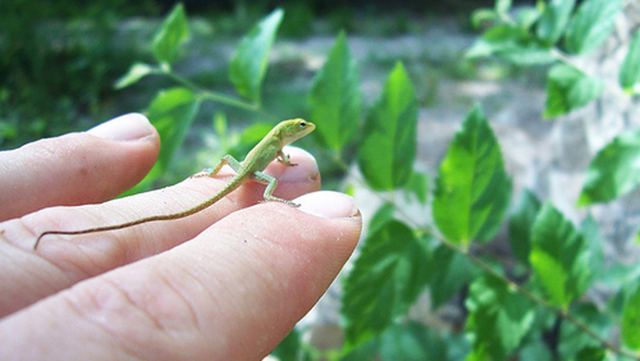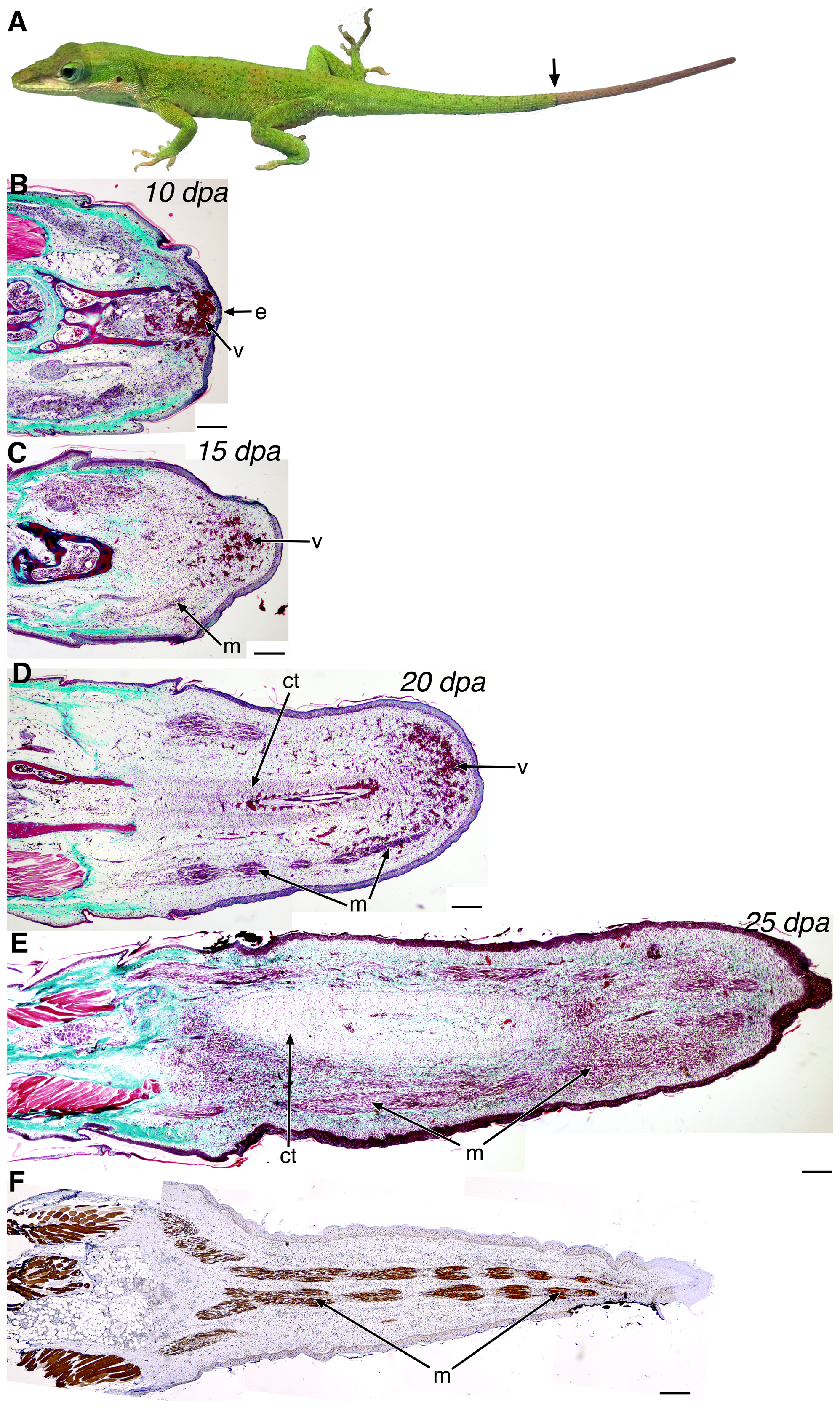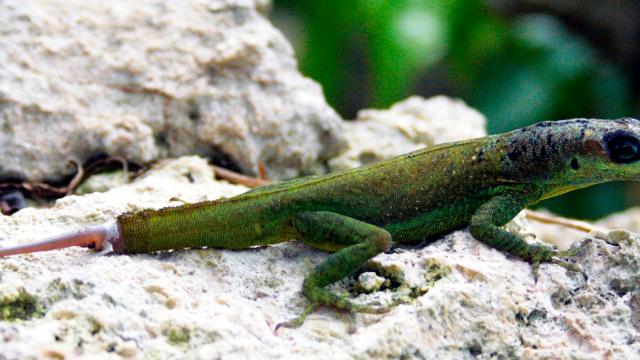Prosthetic technology is getting insanely good. But what if we just didn’t need it any more? What if we could simply program our genes to regrow human limbs as easily as lizards regrow lost tails? Well, scientists are getting closer to that fantastic future.
A huge team of 19 scientists from around the world just published a paper on the mechanisms behind tail generation in lizards. Specifically, they looked at anole, a type of iguana (pictured above) that can voluntarily drop its tail in the event of an emergency. Then, about 25 days later, the lizard’s got his tail back. Like magic!
Actually, it’s more like genetics. By taking paper-thin slices of flesh from euthanised lizards at various stages of the regeneration process, the researchers were able to analyse the different biological processes at play and figure out which genes the anoles used to regenerate. In total, they identified 326 genes at play, 302 of which are analogous to genes that mammals possess. Quite curiously, they also discovered that anoles’ tails regenerate in a way that’s very different from how they originally form in the womb.

So you’re probably wondering how it works. Well, at first, the regeneration process looks a lot like the normal healing process. Just as a wound first closes up, the tail heals and epithelial tissue begins to form along with new blood vessels. After about 10 days, the real regrowth starts to happen. Nerve tissue forms inside of soft muscle tissue, and the new tail is able to start transporting fluid. Then, about 20 days after the tail fell off, a tube of cartilage forms. In a few days this cartilage segments into tiny tail bones. In a way, it’s sort of the opposite of what happens in the womb. Check out images of the various stages below. (The “10 dpa” part means 10 days since the tail fell off.)
So do the 24 extra genes that lizards possess enable them to regenerate tails? It’s probably more complicated than that. But thanks to this team’s hard work — and who knows how many euthanised anoles — we’re a little bit closer to solving the big scientific mystery. That means we’re a little bit closer to making prosthetics obsolete, despite the incredible progress made on improving them. And that’s a very exciting thing! [PloS ONE via Wired]

Pictures: PloS ONE / Wikipedia
